Visual Data Mapper
Detailed technical description of how to use the Visual Data Mapping feature for Reverse ETL sources.
The Visual Data Mapper (VDM) offers an intuitive UI to map your warehouse columns to specific destination fields. This is useful especially when mapping your warehouse data to custom fields defined in your destination.
Visual Data Mapper is currently available for the following destinations:
To use this feature, you can use a Reverse ETL source and then connect it to a VDM-supported destination.
Using the Visual Data Mapper
To use the Visual Data Mapper, follow these steps:
- Set up a Reverse ETL source and connect it to a destination. You should then see the following screen:
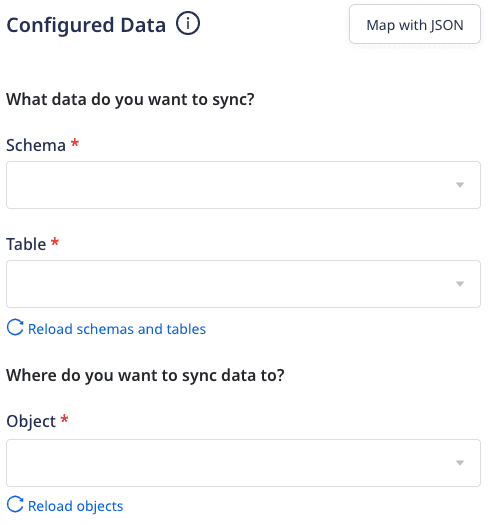
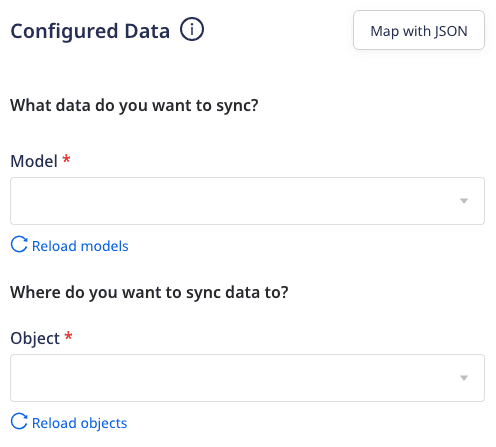
By default, Visual Data Mapping is enabled for all the VDM-supported destinations. To configure the data via JSON, click on the Map with JSON button.
- Choose the source Model or Schema + Table from where you want RudderStack to import and sync the data.
Upon selection, RudderStack automatically loads the relevant resources. If you have added a new model or warehouse table during this configuration process, click on Reload models/Reload schemas and tables to fetch the latest resources.
- Then, select the destination Object where you want to sync the data. An example in case of Customer.io destination is shown below:
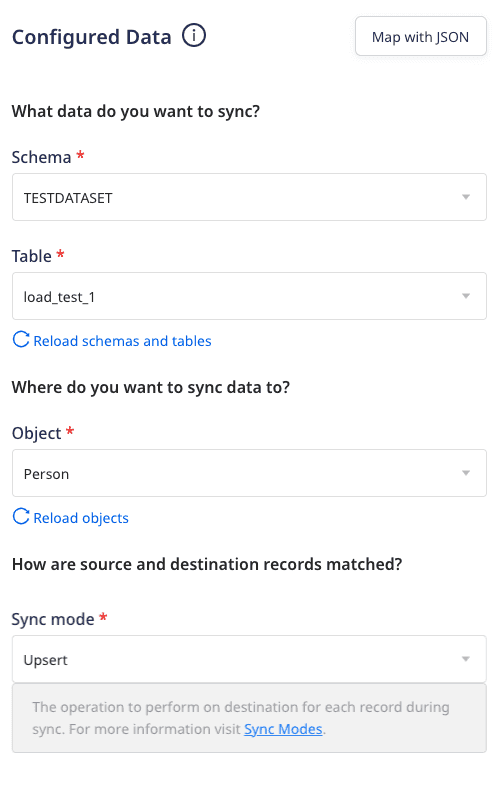
RudderStack automatically loads all the relevant destination objects. If you have added a new destination object during this configuration process, click on Reload objects to get all the latest objects.
- Next, select the sync mode that RudderStack uses to sync your data.
RudderStack supports two modes for syncing your data - Upsert and Mirror. For more information on these modes, refer to the Sync Modes guide.
Choosing the identifier
In the Choose Identifier section, choose a warehouse column and destination field to map your records from the source to the destination. You can choose any column from the dropdown which will act as a unique identifier. An example is shown below:

The identifier (Map with Visualizer) or user_id/anonymous_id (Map with JSON) fields must have unique values in order to successfully sync the data to the destination. The records containing duplicate identifier values will fail to sync. For example, if you have chosen name as the identifier and it contains more than one values as 'Alex', the duplicate record will fail to sync.
Mapping the fields
In the Map Fields section, you can configure the source-destination field mappings by following these steps:
- Click on the Map another field option. Select the Destination field from the dropdown. Then, select the Warehouse column to map this field.
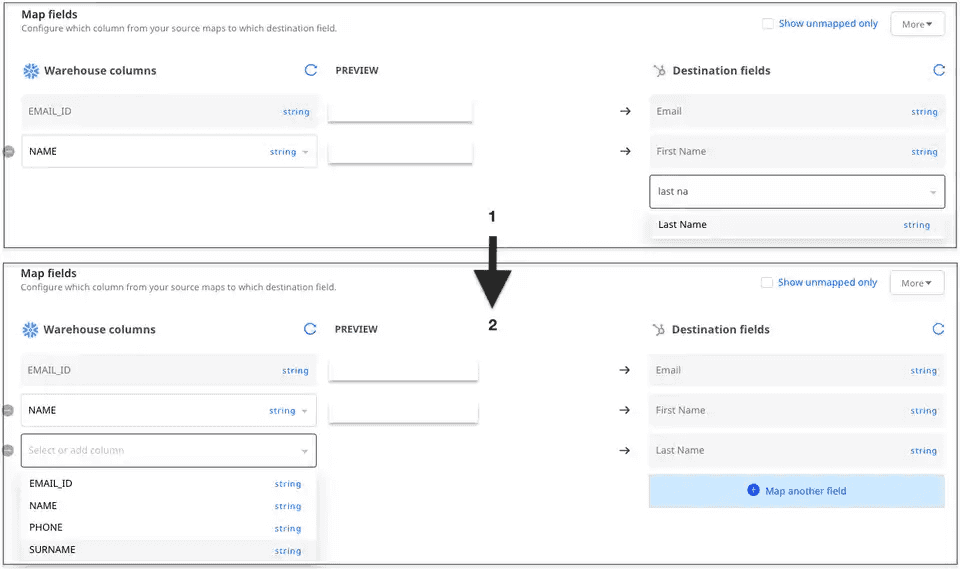
RudderStack gives you full visibility into the name and type of the fields that you are mapping.
Mandatory mappings
When sending events to some objects, there are some required fields that need to be mapped. These fields cannot be removed from the mappings. For example, in case of the Salesforce Account object, Account Name is a required field, as seen in the following image:
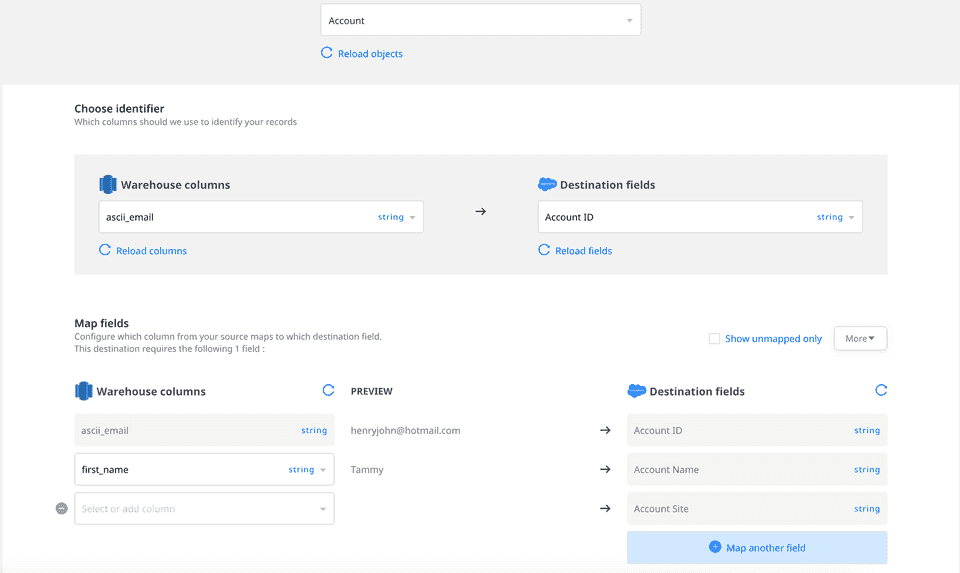
Mapping fields of different type/format
In case you are mapping fields with different data types or formats, you can use the Transformations feature to do type conversion before sending the events data.
For example, RudderStack lets you map the warehouse column Phone of type string to a destination field Company ID of type float . You can then add a transformation at the destination end to do this type conversion to ensure there is no mismatch.
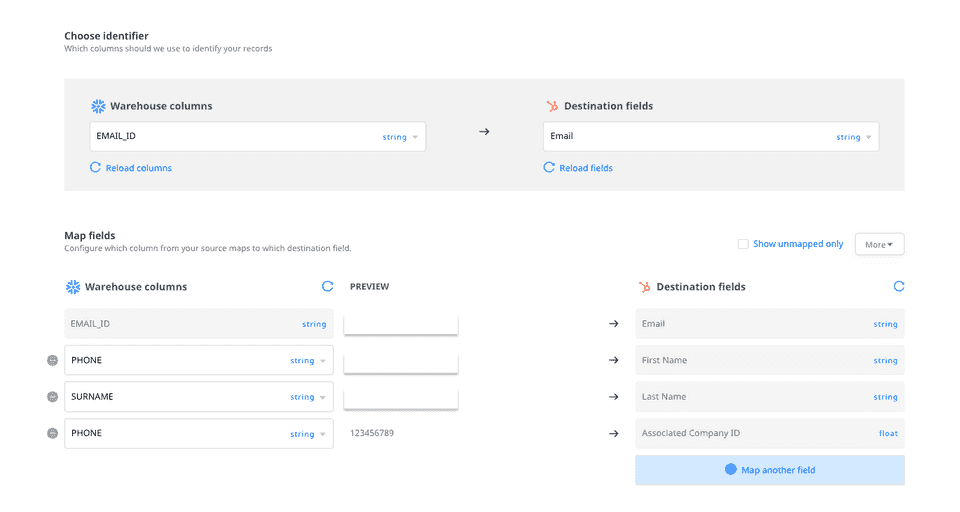
Creating a custom destination field
RudderStack lets you create a custom destination field and map it to a warehouse column by following the below steps:
- Click on the Map another field option.
- Type the name of the custom destination field that you want to create, as shown:
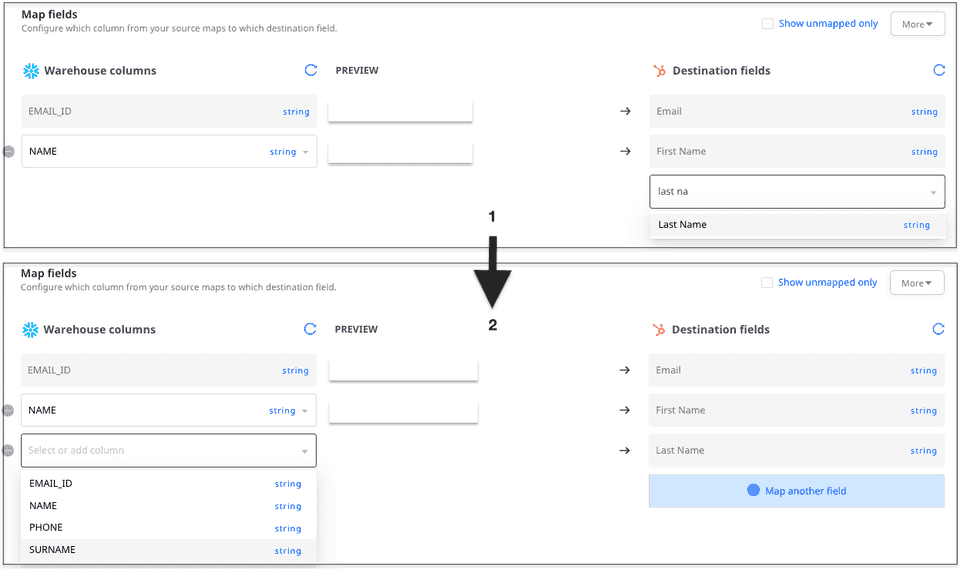
- Finally, click on Create.
Once you have mapped all the source columns to the destination fields, click on Next to complete the destination configuration.
Contact us
For any questions or issues on the Visual Data Mapper feature, you can contact us or start a conversation in our Slack community.